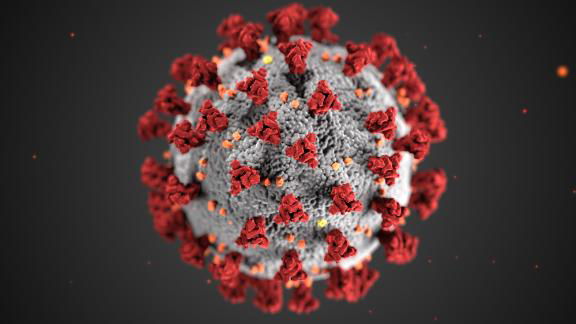WHO: 10% of world’s people may have been infected with virus

GENEVA (AP) The head of emergencies at the World Health Organization said Monday the agency’s “best estimates” indicate roughly 1 in 10 people worldwide may have been infected by the coronavirus — more than 20 times the number of confirmed cases — and warned of a difficult period ahead.
Dr. Michael Ryan, speaking to a special session of the WHO’s 34-member executive board focusing on COVID-19, said the figures vary from urban to rural areas, and between different groups, but that ultimately it means “the vast majority of the world remains at risk.” He said the pandemic would continue to evolve, but that tools exist to suppress transmission and save lives.
“Many deaths have been averted and many more lives can be protected,” Ryan said. He was flanked by his boss, WHO Director-General Tedros Adhanom Ghebreyesus, who minutes earlier led a moment of silence to honor victims, as well as a round of applause for the health workers who have strived to save them.
Ryan said southeast Asia faced a surge in cases, Europe and the eastern Mediterranean were seeing an increase, while the situations in Africa and the Western Pacific were “rather more positive.” Overall, though, he said the world was “heading into a difficult period.”
“The disease continues to spread. It is on the rise in many parts of the world,” Ryan told attendees from governments who make up the executive board and provide much of the WHO’s funding. “Our current best estimates tell us that about 10 percent of the global population may have been infected by this virus.”
The estimate — which would amount to more than 760 million people based on a current world population of about 7.6 billion — far outstrips the number of confirmed cases as tallied by both the WHO and Johns Hopkins University, now more than 35 million worldwide. Experts have long said that the number of confirmed cases greatly undershoots the true figure.
Ryan did not elaborate on the estimate. Dr. Margaret Harris, a WHO spokeswoman, said it was based on an average of antibody studies conducted around the world. She said the estimated 90 percent of people remaining without infection means the virus has “opportunity” to spread further “if we don’t take action to stop it” such as by contact-tracing and tracking of cases by health officials.
Tedros, during his remarks, said: “What we have learned in every region of the world is that with strong leadership, clear and comprehensive strategies, consistent communication, and engaged, empowered and enabled population, it’s never too late ... Every situation can be turned around — and hard-won gains can be easily lost.”
“The pandemic underlines the fundamental importance of investing in public health and primary health care,” said Tedros, wearing a stylish black, red and yellow mask. Tedros had not worn a mask during scores of COVID-19 press conferences he led at WHO headquarters this year.
The comments came during a special session of the executive board to consider the follow-up to its previous meeting, in May, that passed a resolution to look into the world’s — and WHO’s — response to the pandemic, among other things.
The two-day meeting is the first by the executive board since the Trump administration set off a one-year countdown this summer toward pulling the United States out of the WHO next July. President Donald Trump, who himself has been infected by COVID-19, has repeatedly accused the WHO of being too accepting of China’s explanations of its handling of the outbreak in Wuhan late last year.
On a far more conciliatory tone, Assistant Secretary of Health Brett Giroir, the U.S. representative on the board, told the meeting by videoconference that the United States “looks forward to working together to defeat this pandemic and move our people and economics back to normalcy.”
Giroir also pressed WHO — albeit gently — to clear up its relationship with the Chinese government. He said a “key mandate” from the resolution in May was its call for a joint mission involving the WHO, the World Organization for Animal Health, and the U.N.’s Food and Agricultural Organization to look into the animal origins of the virus and its transmission to humans.
A two-person advance team for that mission has visited China, but a fuller mission isn’t ready. Giroir said it was “critical” that WHO member states receive regular and timely updates about the mission and its “terms of reference” — an allusion to working guidelines that detail just how much access the mission’s members will have in China.
Chinese board member Zhang Yang, speaking by videoconference, said China has been “transparent and responsible” and has been fulfilling its responsibilities under the resolution. She said it had been communicating regularly with the WHO and keeping up its financial commitments to the U.N. agency.
Board member Clemens Auer of Austria lamented a “political weakening” of the WHO, citing the “potential withdrawal of a strong WHO member state” — an allusion to the U.S. He appealed for a “retreat session” for board members, saying it should be an “active” body — not a “ceremonial” one. U.S. representative Giroir expressed support for that idea.